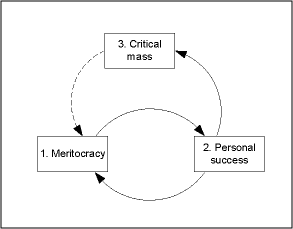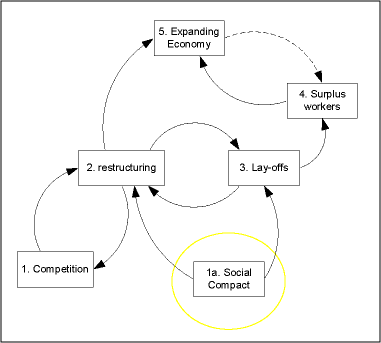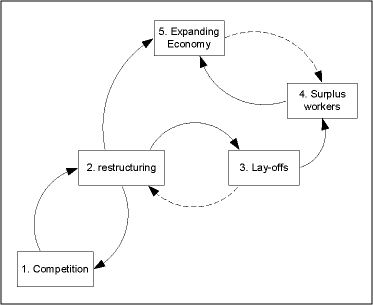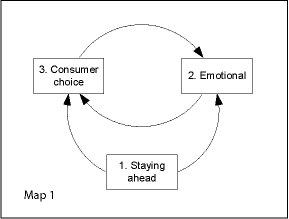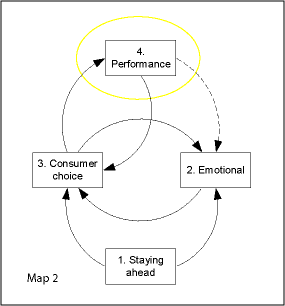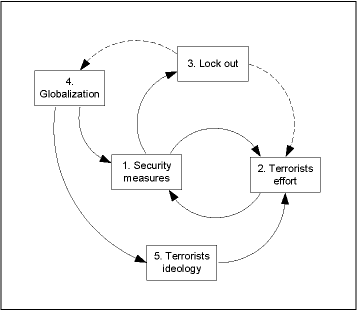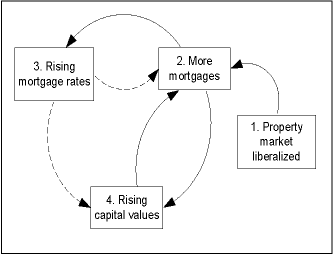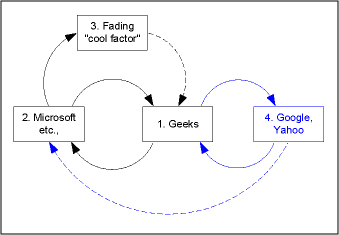 Microsoft owns the world of PC computing. The reinforcing loop between Box 1 and Box 2 underscores that fact. Microsoft pays their geeks especially well to write software (Box 1) and Microsoft’s success (Box 2) in turn attracts more geeks to their ranks. But Microsoft eventually loose their "cool factor" (Box 3) when they fail to continue to be the "happening place". No more sexy products to build or world class problems with world class impact to solve. The virtuous cycle between Box 1 and Box 2 slows when Box 3 appears for Microsoft.
Microsoft owns the world of PC computing. The reinforcing loop between Box 1 and Box 2 underscores that fact. Microsoft pays their geeks especially well to write software (Box 1) and Microsoft’s success (Box 2) in turn attracts more geeks to their ranks. But Microsoft eventually loose their "cool factor" (Box 3) when they fail to continue to be the "happening place". No more sexy products to build or world class problems with world class impact to solve. The virtuous cycle between Box 1 and Box 2 slows when Box 3 appears for Microsoft.Therefore Microsoft’s stock begins to under perform. It becomes more like a utility than a growth stock. The market however is always looking for growth opportunities. That opportunity is now filled by the likes of Google and Yahoo (Box 4). The virtuous cycle that Microsoft is enjoying is fading and shifting right to a growing virtuous cycle between Box 1 and Box 4. The search engine leaders has the toughest technical problems that attracts the best people with the greatest potential impact on how we use the Internet.
An ascending Google will steal the wind from Microsoft’s sails (see dashed arrow from Box 4 to Box 2) unless Microsoft is able to snatch the wind from someone else. It is trying with its Xbox to usurp Sony’s Playstation, which is perhaps the only other cool place it might have a chance to win.
The best days for Micrososft could be over. A company that expends extraordinary resources on product and service security to raise reliablity fits to a t, a description of what a utility company is. Nowadays you buy Microsoft for the dividends. Look elsewhere if you want growth.
